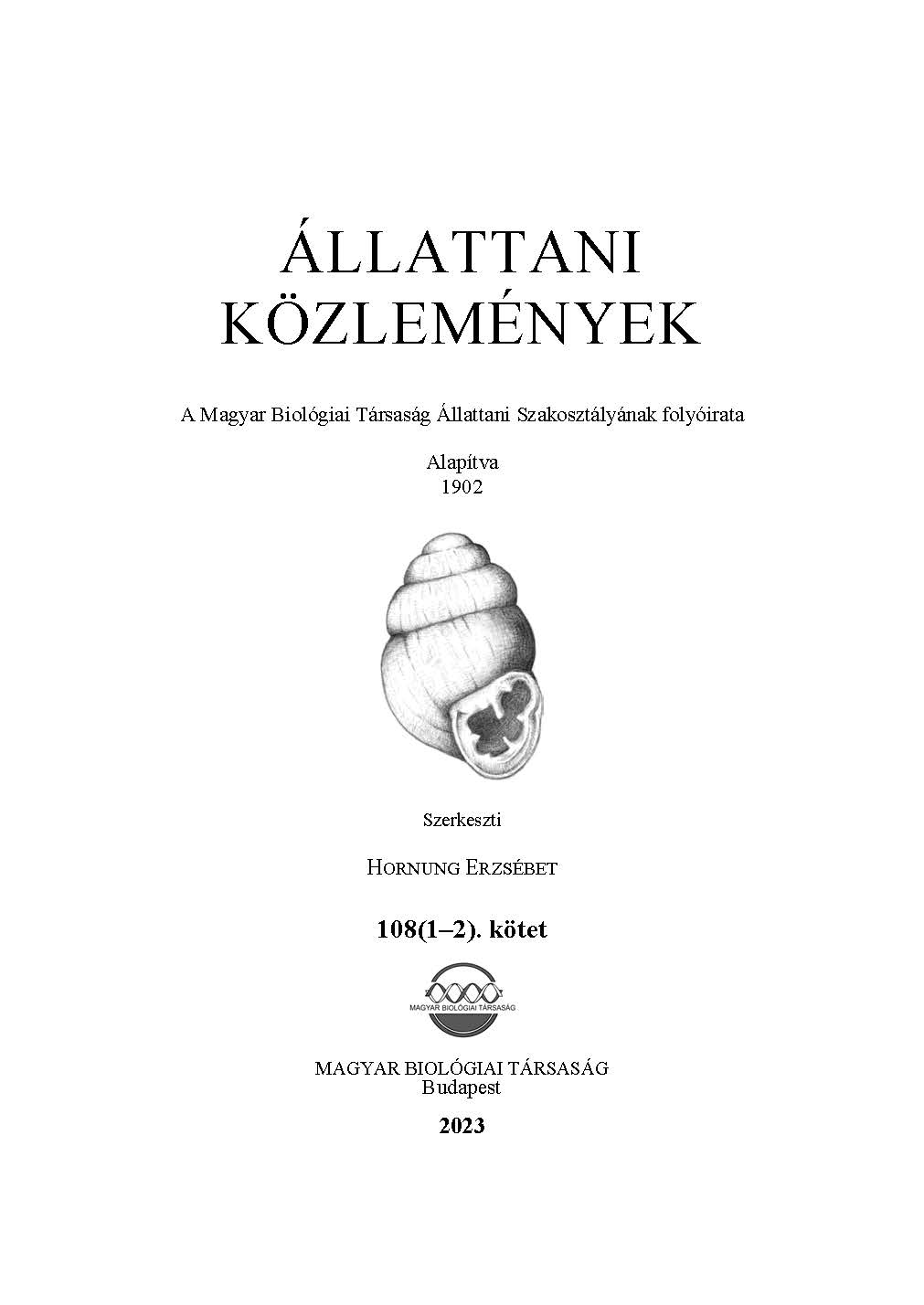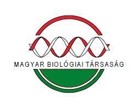The occurrence of protected vertiginid (Vertigo angustior, V. mou-linsiana), a bivalve (Pisidium pulchellum) new to the fauna of Hungary and other mollusc species at the area of the peat-bog of Szőce
Abstract
The peat-bog near Szőce, Őrség National Park, Western Hungary is a strictly protected area where rare plant and animal species are numerous. Although there are several studies performed in this area, we know very little about the mollusc fauna living here. The aim of our study was to get to know mollusc species that were present at the bog and its surroundings, furthermore, to get evidence about the occurrence of the two protected vertiginid species (Vertigo angustior and Vertigo moulinsiana) of Hungary. We also studied their distribution and the characteristics of their habitat. Data collection was carried out between 2020 and 2022. We found 33 mollusc species of which 16 were new to the area. Among them, Pisidium pulchellum was especially interesting as it is the first undisputed evidence of its recent occurrence for the country. Both protected Vertigo species were found at several survey locations with different moisture and irradiation conditions and with different intensity of mowing. Their density was not lower compared to other suitable habitats in Hungary. This is inconsistent with earlier findings, that is, these species and especially V. moulinsiana avoids calcium-poorer sites with acidic soil. It seemed that the frequency of mowing was not related to the presence of Vertigo species, but in habitats they were found in greater number, management that keeps plant covering is preferred.
References
AUSDEN M., HALL M., PEARSON P. & STRUDWICK T. 2005. The effects of cattle grazing on tall-herb fen vegetation and molluscs. Biological Conservation, 122: 317–326.
https://doi.org/10.1016/j.biocon.2004.07.021
DELI T. 2021a. A harántfogú törpecsiga (Vertigo angustior) monitorozása. In: KEMENCEI Z. & PA-TALENSZKI A. (szerk.): Módszertani kézikönyv a hazánkban előforduló egyes közösségi jelentőségű állatfajok terepi vizsgálatához. Agrárminisztérium, Budapest, pp. 48-63.
DELI T. 2021b. A hasas törpecsiga (Vertigo moulinsiana) monitorozása. In: KEMENCEI Z. & PA-TALENSZKI A. (szerk.): Módszertani kézikönyv a hazánkban előforduló egyes közösségi jelentőségű állatfajok terepi vizsgálatához. Agrárminisztérium, Budapest, pp. 64-78.
ERDŐS J. 1956. Additamenta ad cognitionem faunae Chalcidoidarum in Hungaria et regionibus finitimis. VI. 19. Eulophidae. Folia entomologica hungarica, 9: 1–65.
FEHÉR Z. 2009. Proposed protocol for monitoring Vertigo (Mollusca: Gastropoda: Vertiginidae) species in Hungary. Tentacle, 17: 21–24.
HORNUNG E., MAJOROS G., FEHÉR Z. & VARGA A. 2003. An overview of the Vertigo species in Hun-gary: their distribution and habitat preferences (Gastropoda, Pulmonata: Vertiginidae). Heldia, 5: 51–57.
JANKOWIAK A. & BERNARD R. 2013. Coexistence or spatial segregation of some Vertigo species (Gast-ropoda: Vertiginidae) in a Carex rich fen in central Poland. Journal of Conchology, 41: 399–406.
KILLEEN I., MOORKENS E. & SEDDON M. 2012. Vertigo moulinsiana. The IUCN Red List of Threate-ned Species 2012: e.T22939A128409258. https://doi.org/10.2305/IUCN.UK.2012-1.RLTS.T22939A128409258.en (utolsó megtekintés: 2022. nov. 27.)
KONDOROSY E. & HARMAT B. 1997. Contributions to the Heteroptera fauna of Őrség Landscape Conservation Area. Savaria – A Vas megyei Múzeumok Értesítője, 24: 25–50.
KSIĄŻKIEWICZ Z., KIASZEWICZ K. & GOŁDYN B. 2013. Microhabitat requirements of five rare vertiginid species (Gastropoda, Pulmonata: Vertiginidae) in wetlands of Western Poland. Malacologia, 56: 95–106. https://doi.org/10.4002/040.056.0207
KSIĄŻKIEWICZ Z. 2014. Impact of land use on populations of Vertigo moulinsiana (Dupuy, 1849) and Vertigo angustior (Jeffreys, 1830) (Gastropoda: Pulmonata: Vertiginidae): Ilanka River Valley (W. Poland). Folia Malacologica, 22: 277–282. https://doi.org/10.12657/folmal.022.019
KSIĄŻKIEWICZ-PARULSKA Z. 2018. The light–dark cycle of Desmoulin’s whorl snail Vertigo moulinsia-na Dupuy, 1849 (Gastropoda, Pulmonata, Vertiginidae) and its activity patterns at different tempe-ratures. Animal Biodiversity and Conservation, 41: 109–115. https://doi.org/10.32800/abc.2018.41.0109
LIPIŃSKA A. & ĆMIEL A. 2016. Habitat structure effects on the distribution and abundance of the rare snail Vertigo moulinsiana (Dupuy, 1849). Journal of Conchology, 42: 79–83.
MOORKENS E., KILLEEN I. & SEDDON M. 2012. Vertigo angustior. The IUCN Red List of Threatened Species 2012: e.T22935A16658012. https://doi.org/10.2305/IUCN.UK.2012-1.RLTS.T22935A16658012.en (utolsó megtekintés: 2022. nov. 27.)
NÓGRÁDI S. 1989. The Trichoptera fauna of Szőce and its environs. A Janus Pannonius Múzeum Év-könyve, 33: 27–33.
ORSZÁGOS METEOROLÓGIAI SZOLGÁLAT Magyarország csapadékviszonyai. https://www.met.hu/ eghaj-lat/magyarorszag_eghajlata/altalanos_eghajlati_jellemzes/csapadek/ (utol¬só megtekintés: 2022. nov. 27.)
PÁLL-GERGELY B. 2006. Adatok a Déli-Bakony és a Balaton-felvidék Mollusca-faunájához. Mala-kológiai Tájékoztató, 24: 53–60.
PÁLL-GERGELY B. & ERŐSS Z. 2009. A Magyarországon élő Vertigo fajok együttes előfordulásai és megjegyzések habitat-preferenciájukról. Malakológiai Tájékoztató, 27: 39–46.
PAPP J. 2009. Az Alpokalja gyilkosfürkész faunájának alapvetése (Hymenoptera: Braconidae) IV. Tíz alcsalád fajai. Praenorica, 11: 169–188.
PINTÉR L. & SUARA R. 2004. Magyarországi puhatestűek katalógusa hazai malakológusok gyűjtései alapján [Catalogue of the Hungarian molluscs based on the collectings of Hungarian malacologists]. In: FEHÉR Z. & GUBÁNYI A. (szerk.): A magyarországi puhatestűek elterjedése [Distribution of the Hungarian molluscs] II. Magyar Természettudományi Múzeum, Budapest, 547 pp.
PÓCS T., NAGY E., GELENCSÉR I. & VIDA G. 1958. Vegetationsstudien im Őrség (Ungarisches Ostal-penvorland). Vegetációtanulmányok az Őrségben. Akadémiai Kiadó, Budapest, 124 pp.
TÓTH B., CSONKA A.CS., MECSNÓBER M. & HERÉNYI M. 2017. A Fiatalok Természetismereti Klubja adatai Szőce rovarfaunájához. Állattani Közlemények, 102: 71–93.
https://doi.org/10.20331/AllKoz.2017.102.1-2.71
UHERKOVICH Á. 1980. Alpokalja nagylepkéinek (Macrolepidoptera) faunisztikai alapvetése (Nyugat-Magyarország nagylepkefaunája II). Savaria – A Vas megyei Múzeumok Értesítője, 9–10: 27–55.
UHERKOVICH Á. 1987. Néhány adat Szőce környékének nagylepkefaunájáról (Lepidoptera). Praenori-ca, 2: 119–124.
UHERKOVICH Á. 2010. További adatok a Mecsek-hegység puhatestű (Mollusca) fajainak elterjedéséhez. Natura Somogyiensis, 17: 83–122.
VAVROVÁ Ľ, HORSÁK M., ŠTEFFEK J. & ČEJKA T. 2009. Ecology, distribution and conservation of Ver-tigo species of European importance in Slovakia. Journal of Conchology, 40: 61–69.







